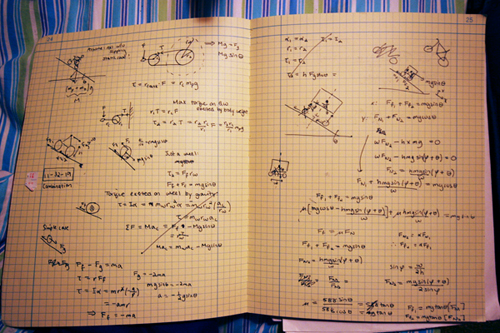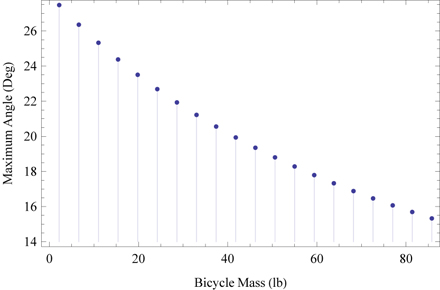I have 3 parttime jobs teaching for 3 different tutoring agencies in the bay area. Yet my success with finding odd jobs of any other sort has been decidedly abysmal. My applications have thusfar been unceremoniously rejected by 3 coffee shops, 4 bars, 7 restaurants, 2 book shops, and now 1 party supplies store.
I know it’s not for lack of effort. I put on my best clothes and my best smile. I walked into each venue and introduced myself in the most graceful, cordial way I knew. I laughed when I was supposed to, nodded when the occasion was right, exuded confidence and enthusiasm out of every pore. So then why the bad luck? Recalling the several extremely positive meet-and-greets with no follow up phone calls, I deduced it must have been my resume. Too much research, not enough emphasis on customer service: I probably didn’t seem serious to them, passionate enough about the food industry to be its proper liaison. I tossed it and started over. 4 years of research was condensed into 1 line. GPA and Classes: gone. Fluency in this and the other programming languages: gone. About the only trace of my college education was a mention of my bachelor’s degree in physics. Still, though, no luck. Maybe that’ll have to go, too.
Somebody once warned me about being “branded”. I had noticed a strange phenomenon. It’s partly a sensation and partly an observation. It was that as I learned more, as I became more educated, instead of finding a world full of increasing possibility, I found my options narrowing. When I first began studying physics, it was out of curiosity. When I discovered I actually wasn’t bad at it, I continued out of satisfaction. It was only when I began thinking of graduate school out of obligation that I launched my somewhat catastrophic rebellion against the forces of inertia. The idea was to rid my head of it. To get clear enough out of the orbit of academia to take a good, hard look back… at it, and at everything else. But most of all, to prove that there was time in the world for such silly things.
The idea wasn’t to get back into academia on account of having failed at everything else.
But alas, after handing over my first and last month’s rent, there’s not much left in my bank account. And it’s back to Stanford again tomorrow. These trips are getting real expensive for me. I just wish everything didn’t have to take so damn long.
Lately, my life has revolved around two things: physics, and biking everywhere. As is often the case when you spend a lot of time doing two things one after another, you start looking for ways to connect the two, to integrate them into one giant hobby that just sucks up all of your time. Clearly, the end result is that I’ve been thinking a lot lately about the Newtonian physics of bicycles. Of particular interest to me was my personal ineptitude at climbing hills. It surprised even me. I decided that there must be a reason– something was standing in my way of personal achievement, and that something was probably physics.
Before attacking any problem, I first consider the answers to two questions. 1) Is it doable? That is, within bounds and reason. And 2) Is it profitable? By which I mean, will it yield a result of actual interest and relevance? Oftentimes, particularly complex problems require so many approximations that ultimately, the answer you get is an unrecognizable idealization devoid of all possible usefulness.
After I assured myself of the doability and profitability of this endeavor, I posed the question in this way. Given the dimensions and mass of my primary bicycle (and my person), what is the steepest slope I can reasonably hope to surmount assuming the maximum pedaling force I can apply is equal to my body weight? This latter assumption, as many would love to point out to me, is not necessarily true. One can theoretically apply a downward force greater than one’s weight by pulling up on the handle bars. But, since that’s not something I’m hoping to have to do in order to get up a hill, I’m sticking with my original criteria.
The constants:
- mass of bike (m): 12kg (I don’t actually know if it’s this heavy)
- mass of person (M): 48 kg (I do know that I am this heavy)
- gravitational acceleration (g): 9.8 m/s^2
angle between normal and vector from the contact pt on the front tires to the center of mass of M+m (phi): 60 deg (assumption: geometry is symmetric wrt front and back wheels)(not necessary)- crank length on pedal (Rc): 0.16 m
- chain ring to rear wheel gear ratio (R2/R1): 1 (I have 3 speeds on my bike, this is close to the setting on the
middlelowest gear - wheel radius (Rw): 0.34 m
This statics problem took me a lot longer to solve than I’d really be comfortable admitting. There were several computational dead ends; hair-raising crises about fundamental principles of Newtonian physics.

The most round-a-bout way of doing this problem, ever.
Ultimately, I had this to show for it. The point at which the torque exerted by my weight through the bike chain on the rear wheel of the bike can no longer be expected to propel me forward against the counter-influence of gravity: a lowly 33.2 degrees an even lowlier 22.2 degrees.
This exercise was very gratifying to me. I don’t feel nearly as bad anymore about starting a backwards roll down some of those hills.
As just a point of interest, I wondered how strong was the dependence of this angle on the weight of the rider, assuming all other parameters held constant. I hear a lot about the advantage smaller riders have on heavier riders when climbing, but at least when propulsive power comes from weight alone, I found that more massive riders have an advantage over less massive riders. Unfortunately, this advantage becomes less and less significant as weight goes up, and of course, gets all kinds of scrambled up when you throw brute force into the mix (this is why cyclists talk about power-to-mass ratios, I suppose). But for now, I find an asymptotic relation, as, I think, to be expected.

Max climbable slope (degrees) vs. cyclist mass.
When I first got to Santa Cruz, I got myself a $20 clunker from the used bike yard. It weighed about 45 lbs and sent me into crippling fits of exhaustion trying to navigate this hilly terrain. This next plot is in honor of the old bike. It’s official: while more massive people can potentially use their gumption to their advantage, more massive bikes are nothing but a pain in the ass.

Max climbable slope (degrees) vs. bike mass for a 50 kg rider.
After I finished making those graphs, I went and ate pizza and played Settlers of Catan with my housemates for 2-3 hours. And that was pretty much the highlight of my day.
